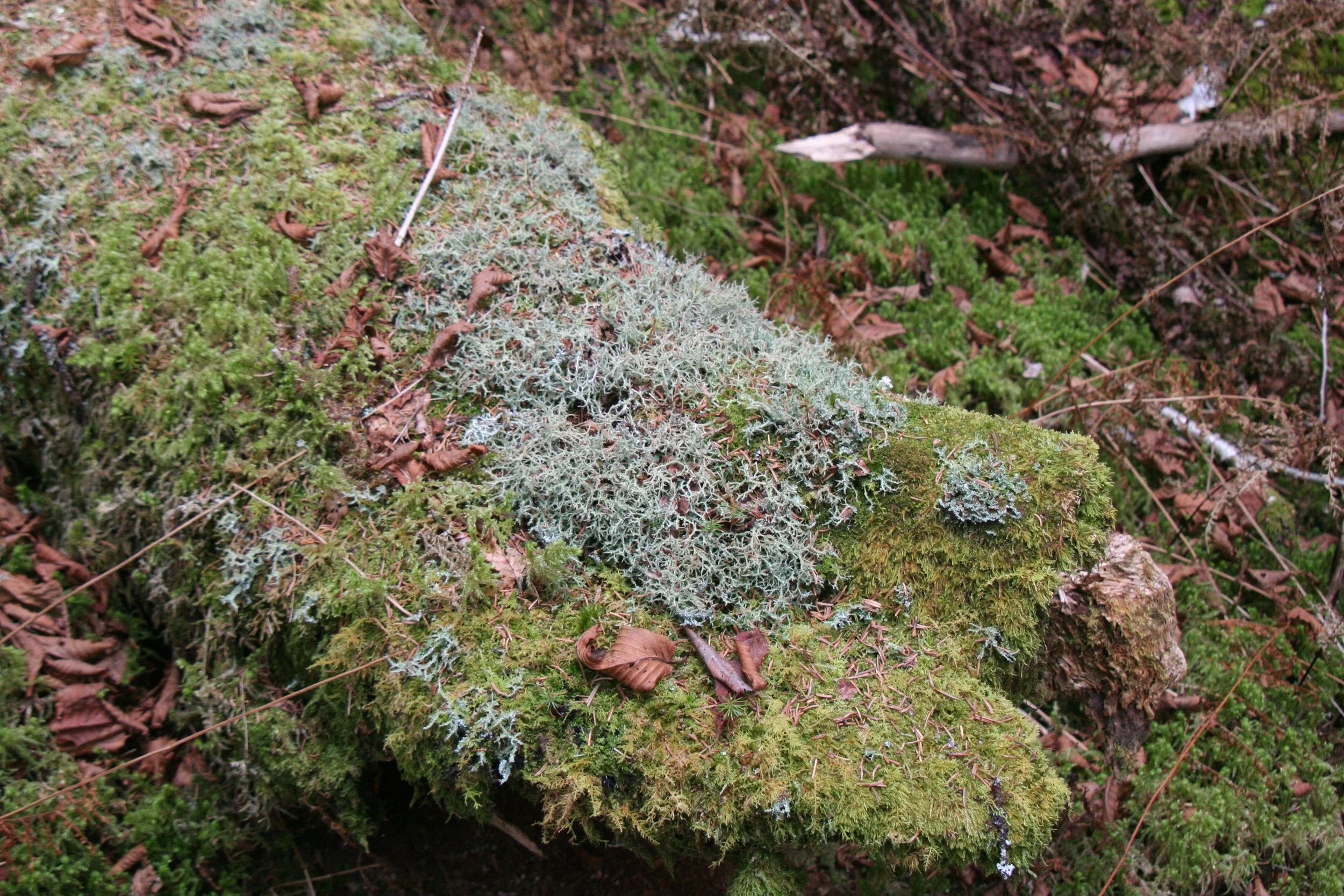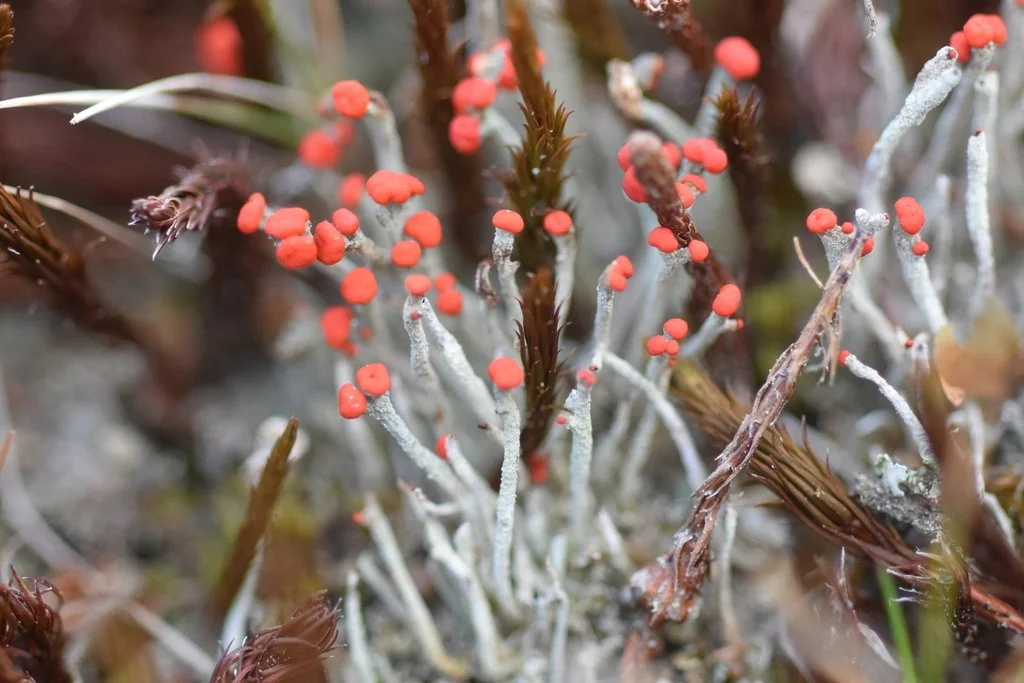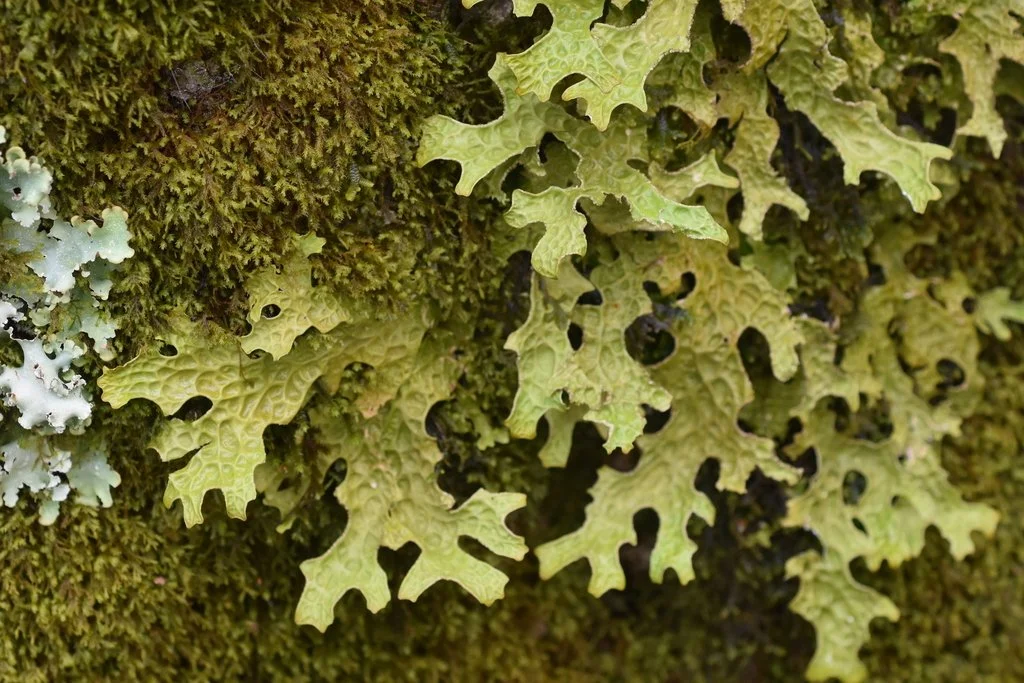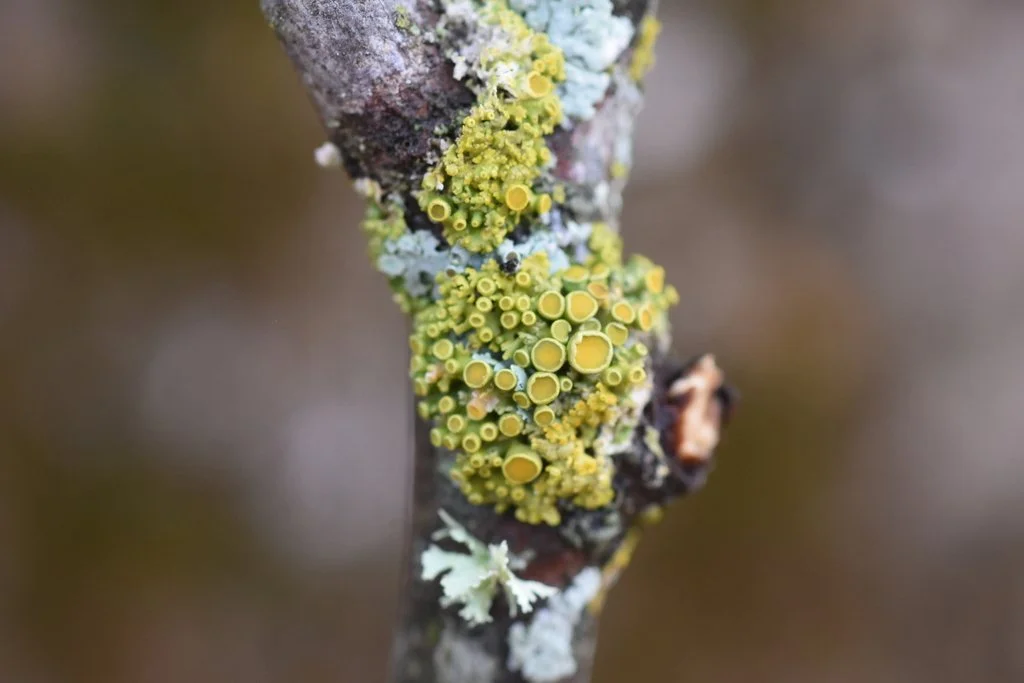A Cold, Dreary Paradise
On a cold, February morning, there’s often a layer of snow or rime ice coating everything above ground at the foot of Whitetop Mountain. Unlike the liveliness of a vivid, birdsong-inundated forest of spring, summer, or fall, a cloudy February morning is dreary, cold, and almost every living creature is hidden. But as soon as snow turns to rain, a beautiful phenomenon strikes the sleeping forest.
Lipstick Powderhorn (Cladonia macilenta), a colorful lichen often found at the base of trees or growing on bare soil.
Tree trunks begin to “glow.” They don’t produce actual light, but every color of the rainbow emerges suddenly in the stark mid-winter. Instead, millions of feeding organisms start to respirate. Lichens.
The best survivors take a keen eye to notice. Lichens have an almost undefeated mastery of surviving harsh conditions for visible life. This unique branch of fungi occurs in every habitat worldwide. Certain lichens thrive in Antarctic deserts on exposed rocks, and some relish hot, humid tropical rainforests. Some endure hurricanes and saltwater storm surges, while others flourish growing on toxic waste and plastic protruding from landfills. A few lichens have even survived growing outside the International Space Situation, far from the blue planet where they originated. Even where mature lichens are unable to grow, their spores often try. Lichens cover the ground, the trees, our homes, and even float through the air we breathe. They are everywhere, and the greater Mt. Rogers ecosystem provides the perfect conditions for lichens.
The Mt. Rogers area is cloaked in a temperate rainforest, and at lower elevations, Appalachian rich cove forest habitats are perpetually protected and filled with atmospheric moisture. Lichen diversity abounds, and winter allows them to thrive. In freezing temperatures, lichens undergo dormancy. They become completely inactive, merging with the dead, gray appearance of winter woods. They survive ice, snow, and blistering winds. Trees are felled, and rocks erode, but lichens dance across the chaos of a changing landscape from spore to adulthood, over and over again.
Tree Lungwort (Lobaria pulmonaria), a giant lichen from Whitetop Mountain known for the dinner-plate-sized rosettes it forms. Lungwort requires clean, humid air to survive, and will often struggle or die if transported to areas with heavy air pollution.
But lichens can’t stay dormant forever. In the summer, a dense canopy of deciduous leaves and competition from mosses, predation by invertebrates, and the constant threat of decomposing requires a healthy organism. If lichens were only a fungus, survival in the summer would be easy. Most species have photosynthetic symbionts; some kind of algae, cyanobacteria, or a relative that is encased inside, capturing supplemental energy. Simply put, long before lichens, “a fungus and an algae took a ‘lichen’ to each other” and the rest was history. Photosynthesis needs sunlight, and a summer canopy can keep most of it blocked high above the tree trunks, rocks, and soil below. The best chance for these happy couples to gather a maximum quantity of sunlight, with the moisture to process it, is on an overcast, wet, and cool winter day.
In a collective show, thousands of shades of greenish-blue from a dull, dusty blue-gray to bright turquoise, accompanied by dark viridian greens, golden-yellows, and even scarlet reds, adorn tree trunks and branches. Once you train your eye to this change, it’s easy to notice on any overcast day if lichens are metabolizing.
Most importantly, lichens have no vascular tissue like most familiar plants; no tricky veins, leaves, or stems to make things complicated. Wildflowers, ferns, and trees are not photosynthesizing in winter, and even if they were, the process happens at a much larger and complex scale. Lichens only have single-celled cyanobacteria or algae on many occasions, which can produce oxygen a lot more efficiently. Together, unrelated mosses and lichens have been found to produce more oxygen, and sequester more carbon dioxide, than the trees they grow on!
Poplar Sunburst Lichen (Xanthomendoza hasseana), a very small and inconspicuous lichen, but enormous compared to many almost-microscopic relatives.
As the days to centuries wear on, old trees accumulate sheets of colorful lichen. Around 600 species of lichens occur in the state of Virginia, and many rely on tree bark to provide a perch and accumulated food. Although they thrive on dead or dying trees, lichens are not parasitic, and may grow equally well on a perfectly healthy forest tree. Lichens do not exist independently from trees, even though they are independent survivors (independent, as they work together). Tracing the line of interdependence from lichens, to trees that host them, to the squirrels that planted them, and beyond, the entire ecosystem sprawls out through the window of just one tiny, slimy superorganism that clings to the harshest and most unforgiving environments.
These are just a few of the reasons lichens (and their cohabitants, mosses) are special to Mt. Rogers, the surrounding highlands, and the world beyond.











